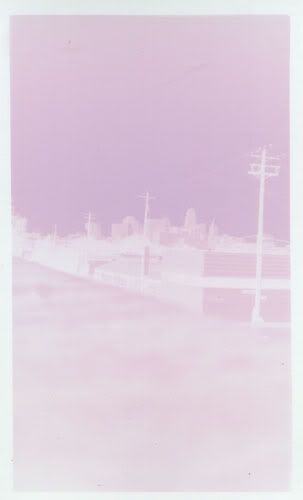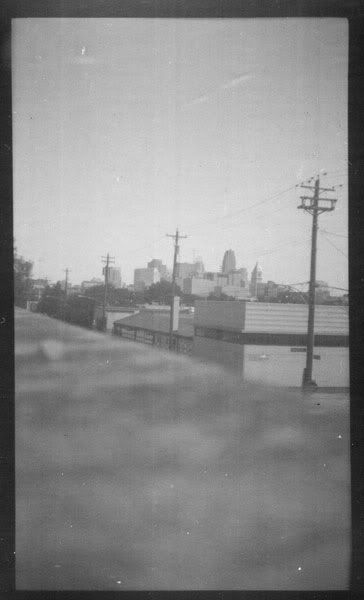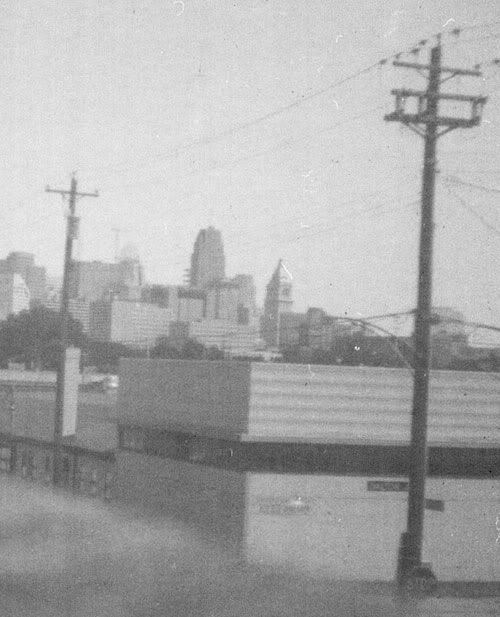most productive lunch hour ever!
So I've got this camera that used to belong to my grandfather. I believe we acquired it when my dad and I cleaned out my grandparents' basement a few years back, but none of us knew enough about old cameras to do anything other than look at it and go "Yep, that's a camera, got a lens and everything" so it's just been sitting around my parents' house. Anyways, it occurred to me yesterday that a couple of people at work might know there was any hope of using it or what it might take to make it so.
The camera is a No. 3A Folding Pocket Kodak (model C), and this particular one (judging by the patent info on the case) was made late 1914 or 1915. As my grandfather was born in 1919, he couldn't have been the first owner, but I don't know anything else about the camera's history. It would have originally taken film, however, the specific type required was discontinued in 1971. What we did instead was cut down a sheet of what has to be the least sensitive photo paper ever (seriously, I did the cutting in the middle of a well-lit office and it was fine. The stuff I'm used to would've been ruined if I'd tried that) to size, and tape it to the back of the box where the film would have been exposed.
This is what we got after a 25 minute exposure.

This is hasn't been fixed, as I don't have any exciting developing chemicals, but again, the paper's so slow to react that I was able to scan it. This is a negative image (some older processes where you're taking the photo directly onto what will be the finished plate will make a positive, which is pretty cool) and actually should be flipped, but I'd already corrected that.
After applying the magic of Photoshop, this is the result.

Pretty good for a 95 year old camera that'd probably been sitting in storage for around half its life! Also, it's not like it's been lovingly restored, this was just the test to see if it'd work at all. Here's a close-up so you can see just how much detail it picked up. I love that you can read the stop sign.

The camera is a No. 3A Folding Pocket Kodak (model C), and this particular one (judging by the patent info on the case) was made late 1914 or 1915. As my grandfather was born in 1919, he couldn't have been the first owner, but I don't know anything else about the camera's history. It would have originally taken film, however, the specific type required was discontinued in 1971. What we did instead was cut down a sheet of what has to be the least sensitive photo paper ever (seriously, I did the cutting in the middle of a well-lit office and it was fine. The stuff I'm used to would've been ruined if I'd tried that) to size, and tape it to the back of the box where the film would have been exposed.
This is what we got after a 25 minute exposure.

This is hasn't been fixed, as I don't have any exciting developing chemicals, but again, the paper's so slow to react that I was able to scan it. This is a negative image (some older processes where you're taking the photo directly onto what will be the finished plate will make a positive, which is pretty cool) and actually should be flipped, but I'd already corrected that.
After applying the magic of Photoshop, this is the result.

Pretty good for a 95 year old camera that'd probably been sitting in storage for around half its life! Also, it's not like it's been lovingly restored, this was just the test to see if it'd work at all. Here's a close-up so you can see just how much detail it picked up. I love that you can read the stop sign.
